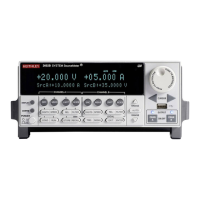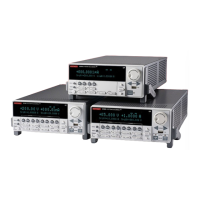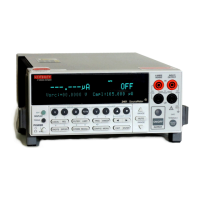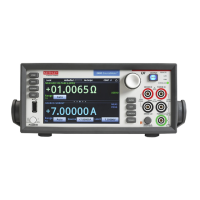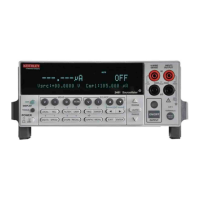Series 2600 System SourceMeters Reference Manual Instrument Control Library 12-3
Return to Section 12 topics 2600S-901-01 Rev. A / May 2006
Functions and attributes
Commands can be function based or attribute based.
Functions
Function based commands are used to control actions or activities. For example,
performing a voltage measurement is a function (action) of an SMU. A function
based command is not necessarily directly related to a Series 2600 operation. For
example, the
bit.bitand function will logically AND two numbers.
Each function consists of a function name followed by a set of parenthesis (()). If
the function does not have a parameter, the parenthesis set is left empty.
Examples:
digio.writeport(15) Sets digital I/O lines 1, 2, 3 and 4 high.
digio.writebit(3, 0) Sets line 3 low (0).
smua.reset() Returns SMU A to its default settings.
digio.readport() Reads the digital I/O port.
The results of a function call are used by assigning the return values to variables
and accessing those variables. The following code will measure SMU A voltage
and return the reading:
reading = smua.measure.v()
print(reading)
Output: 2.360000e+00
The above output indicates that the voltage reading is 2.36V.
For a function that returns one value, the function call can be used in an
expression. For example:
if smua.measure.v() > 5 then
...
end
Attributes
An attribute is a characteristic of an instrument feature or operation. For example,
some characteristics of an SMU source include the source function, range and
output level.
Assigning a value to an attribute
An attribute-based command can be used to assign a new value to an attribute.
For many attributes, the value can be in the form of a discrete number or a
predefined identifier. For example, filter type is an attribute. The moving average
filter is selected by assigning the attribute to either of the following values:
0 or smuX.FILTER_MOVING_AVG.

